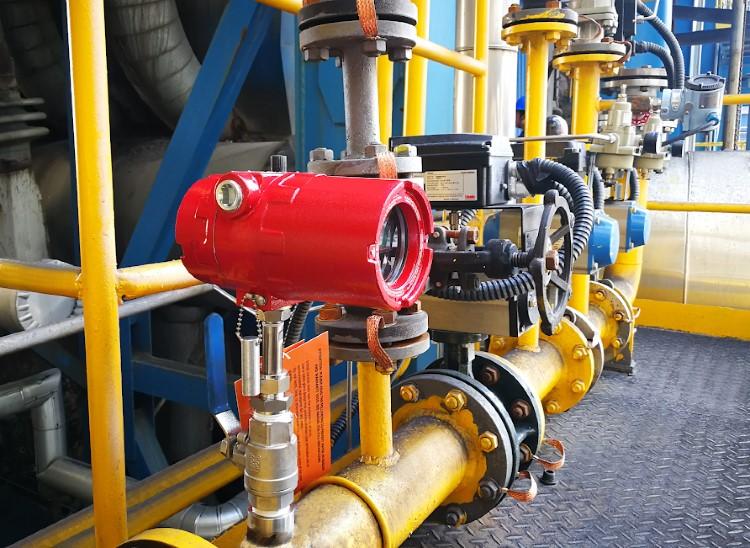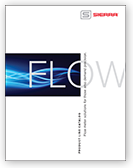Official Blog of Sierra--Let's Talk Flow!
Thermal Mass Flow Meters Increase Boiler Efficiency in Co-generation Applications

Did you know most chemical plants use electricity derived from an on-site natural gas power plant or co-generation plant burning waste gas streams?
In large boilers, power plants bring together air and fuel (natural gas, waste gas, oil or coal) for combustion, which creates heat. The heat boils the water, creating steam. The steam runs through a turbine, which causes the turbine to spin, thus generating electricity. Measuring the flow energy — flows that cost money such as natural gas, waste gas, water and steam — in these boiler applications is critical for improving energy efficiency, identifying waste and minimizing the greenhouse gases going into atmosphere. Only with accurate mass flow measurement can you make informed decisions to improve energy efficiency. Therefore, to improve boiler efficiency it’s critical to know your options when selecting the appropriate flowmeter technology to measure natural gas, water and steam in power generation .
Increasing Combustion with Optimal Fuel-to-air Ratio
Power generation requires inlet air and fuel (natural gas, waste gas, oil or coal) for combustion. Engineers must measure the air and gas ratio accurately for efficient combustion in the boilers. Too much gas is wasteful, dangerous and costly, and too little will create insufficient flame to boil the water efficiently.
Choosing the Right Meter to Monitor Fuel-to-air Ratio
Orifice and Turbine Meters. Monitoring fuel gas to boiler units traditionally is accomplished with an orifice or turbine meter. However, these are not the best measuring devices for this application because they both are subject to failure and require frequent skilled maintenance to provide an accurate and reliable measurement.
Constrained piping conditions can also give engineers headaches. For example, an orifice meter requires 10 to 50 diameters of upstream piping to eliminate the effect of flow disturbances. Because long straight pipe runs are hard to find, most flow measurement systems are affected adversely by varying flow profiles within the pipe.
The biggest cause for concern, however, is that orifice and turbine meters measure volumetric flow. Additional pressure, temperature and differential pressure sensors, as well as a flow computer, are required to calculate or infer mass flow. This not only degrades the flow measurement accuracy, but the installation and maintenance costs with this type of compensated measurement increase the cost of ownership.
Thermal Mass Flow Meters. In contrast, thermal mass flowmeters are suitable for the direct mass flow measurement of gases, not volumetric flow. Because thermal mass flowmeters count the gas molecules, they are immune to changes in inlet temperature and pressure and measure mass flow directly without compensation. In inlet air and gas flow boiler applications, thermal flowmeters perform well because the optimal fuel-to-air ratio for efficient combustion in boilers is calculated on a mass basis, not volumetric (Figure 3).
In a thermal flow meter’s simplest working configuration, fluid flows past a heated thermal flow sensor and a temperature sensor. As the fluid’s molecules flow past the heated thermal sensor, heat is lost to the flowing fluid. The thermal sensor cools down, while the temperature sensor continues to measure the flowing fluid’s relatively constant temperature. The amount of heat lost depends on the fluid’s thermal properties and its flow rate. Thus, by measuring the temperature difference between the thermal and temperature sensors, the flow rate can be determined.
New developments in four-sensor thermal technology coupled with stable “dry sense” sensor technology as well as advanced thermodynamic modeling algorithms enable some thermal flowmeters to attain ±0.5% reading accuracy, rivaling Coriolis flow meter accuracy at less cost. On-board software apps also enable gas-mixing capability, in-situ validation, and dial-a-pipe.
https://
Case-in-Point. Purified Terephthalic Acid (PTA) in China uses Sierra’s thermal mass flow meters to improve boiler efficiency, cut costs and meet government regulations.
Purified terephthalic acid (PTA) is the precursor to polyethylene terephthalate (PET), the ubiquitous material used worldwide in plastic bottles, textiles and elsewhere. A PTA chemical plant in China generated steam and electricity from its on-site power plant using coal as a fuel. It also had a wastewater treatment station that produced methane, which then was flared off. Both processes are major greenhouse gas emitters.
New government regulations required the company to reduce its CO2 emissions. The plant decided to modify its four boilers to burn both coal and the previously flared-off waste gas (methane), estimating a savings of approximately $0.5 million in coal each year. Working with a single-source supplier, engineers reworked the boilers’ designs and installed Sierra Instruments’ industrial insertion thermal mass flowmeters to measure its combustion air and waste gas fuel, ensuring optimal combustion (Figure 7).
One thermal flowmeter measures the waste gas flow, while the other four thermal flowmeters provide sub-metering of this gas stream to each boiler. Another four meters measure pre-heated (200°C, 392°F) combustion air to each boiler, allowing the boiler control system to optimize the fuel-to-air ratio. The Sierra mass flow meters provided both precision flow data for complying with government regulations and helped the company reduce waste while increasing efficiency.
Discover More Ways to Improve Boiler Efficiency through Tuning your boiler https://www.sierrainstruments.com/blog/?tuning-boiler-epa-boiler-mact-compliance.
Scott Rouse, Product Line Director
Sierra Instruments

 Go to Autotest Division >
Go to Autotest Division > DOWNLOAD
DOWNLOAD